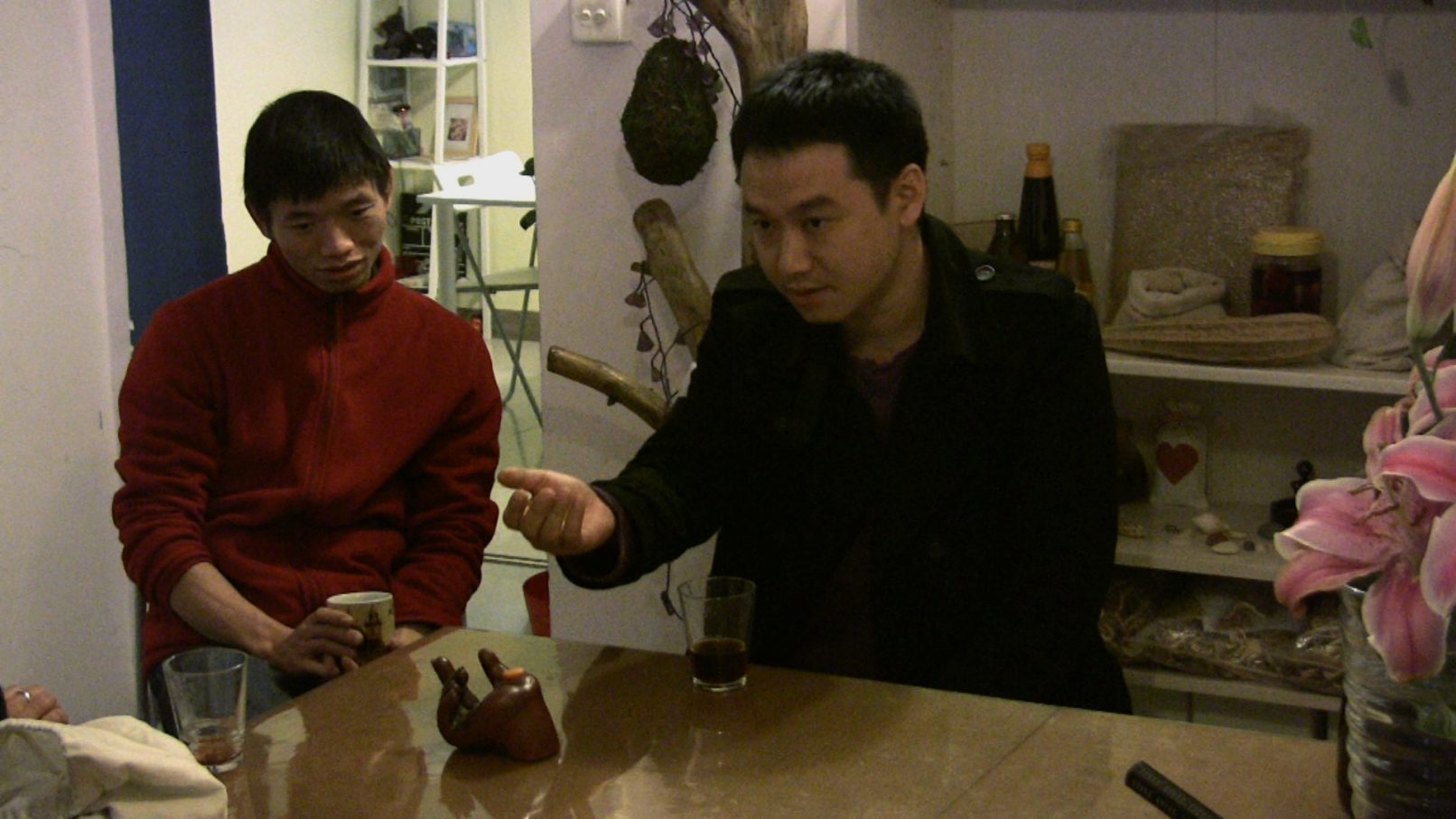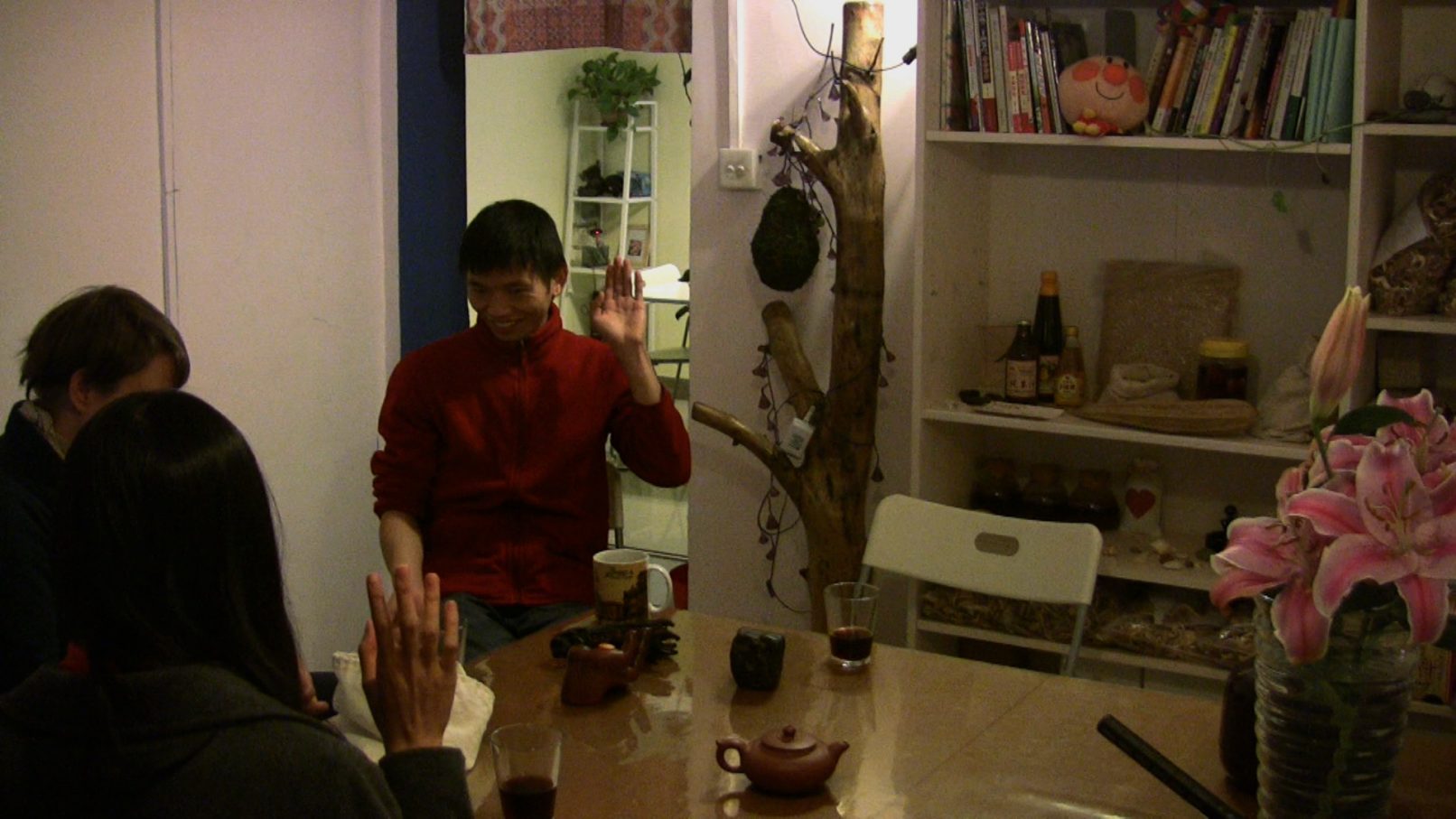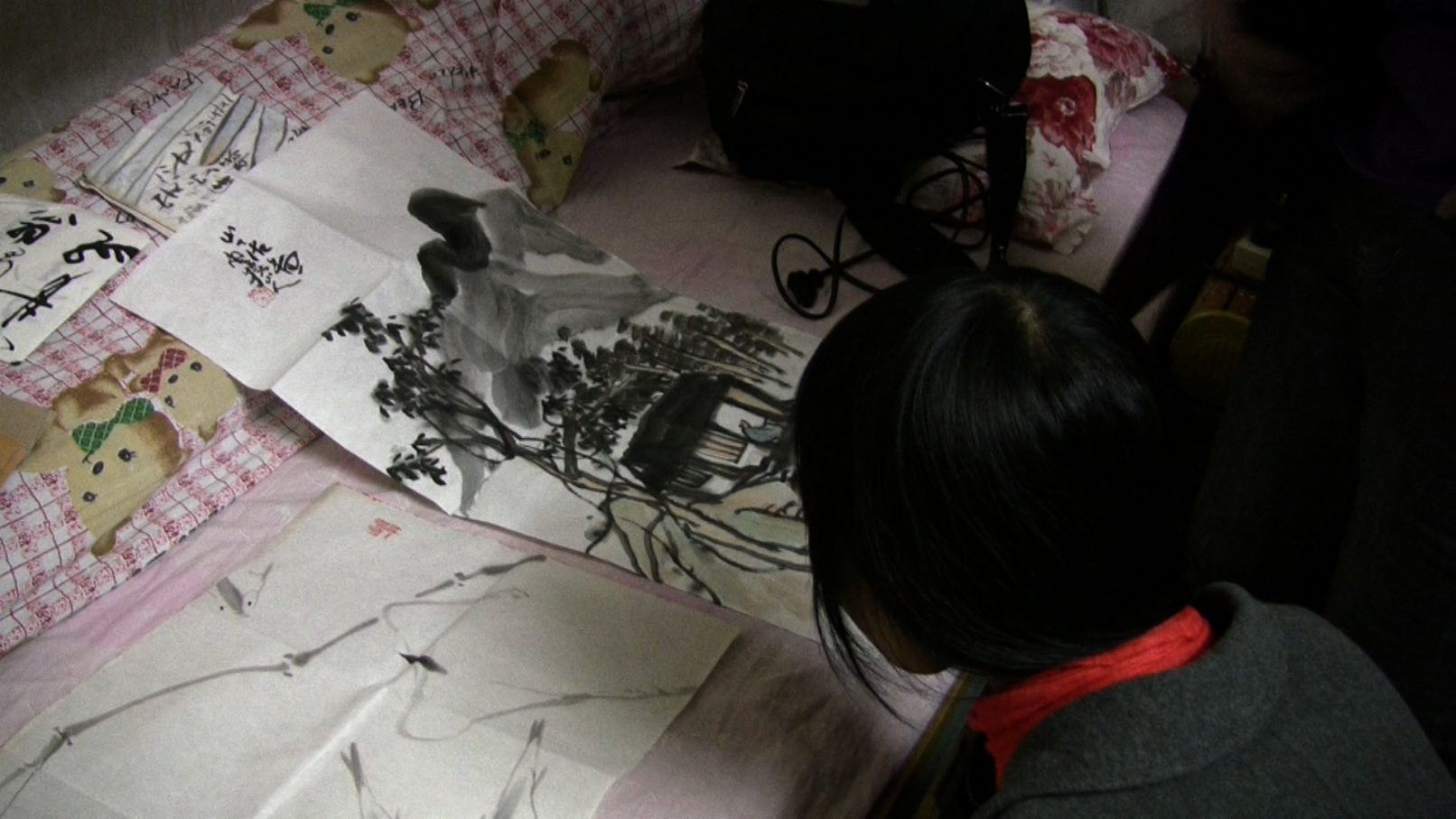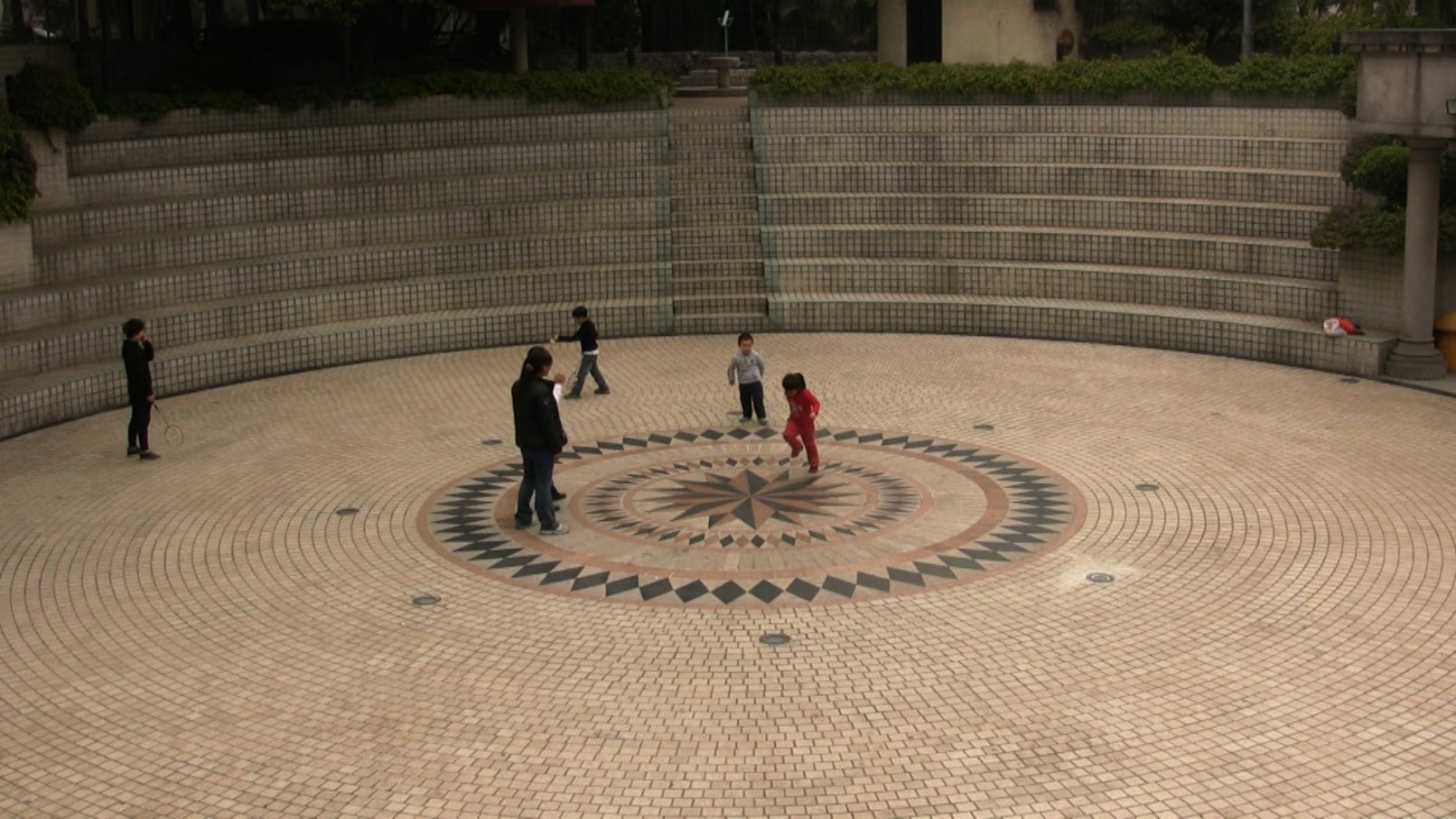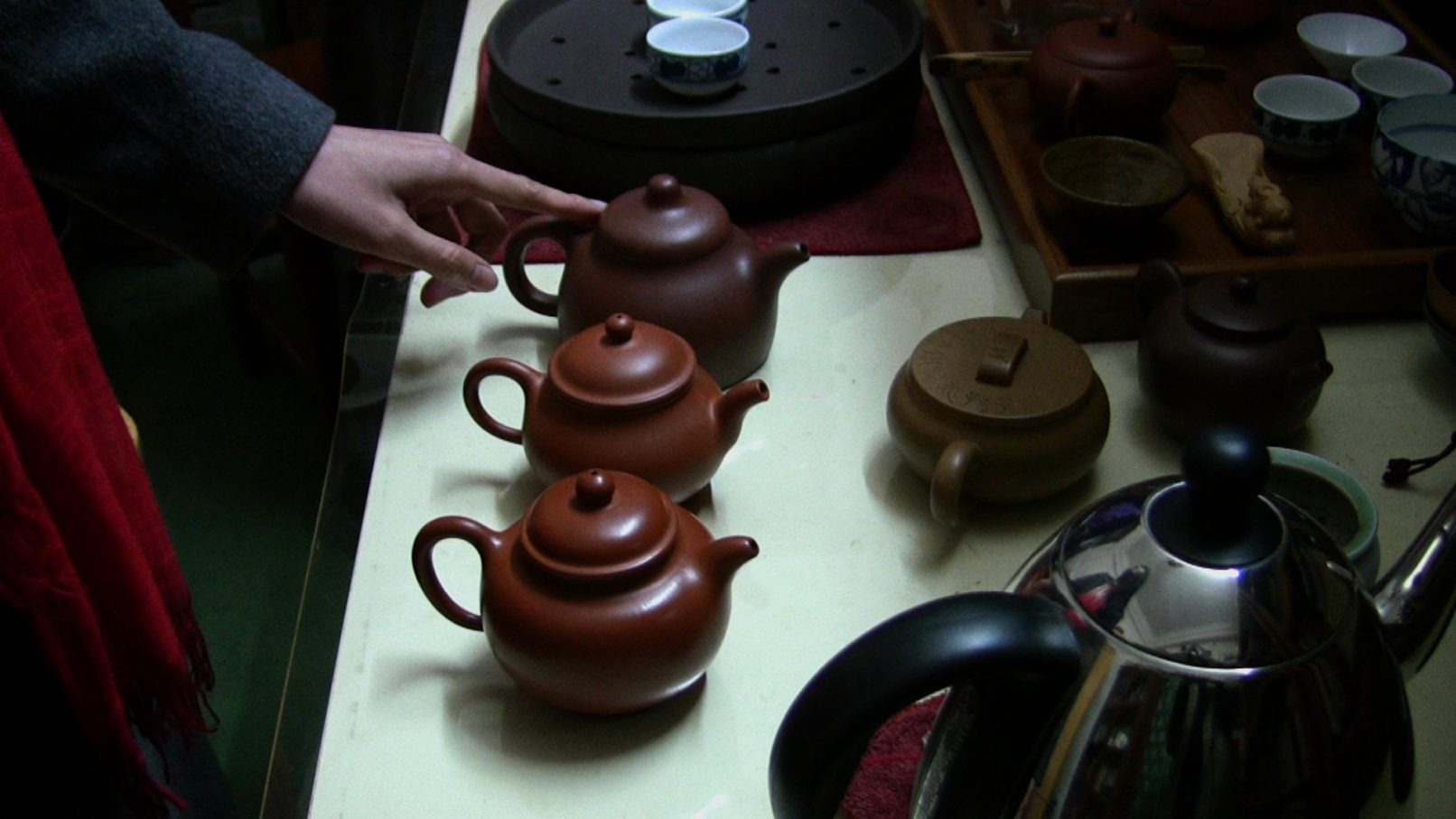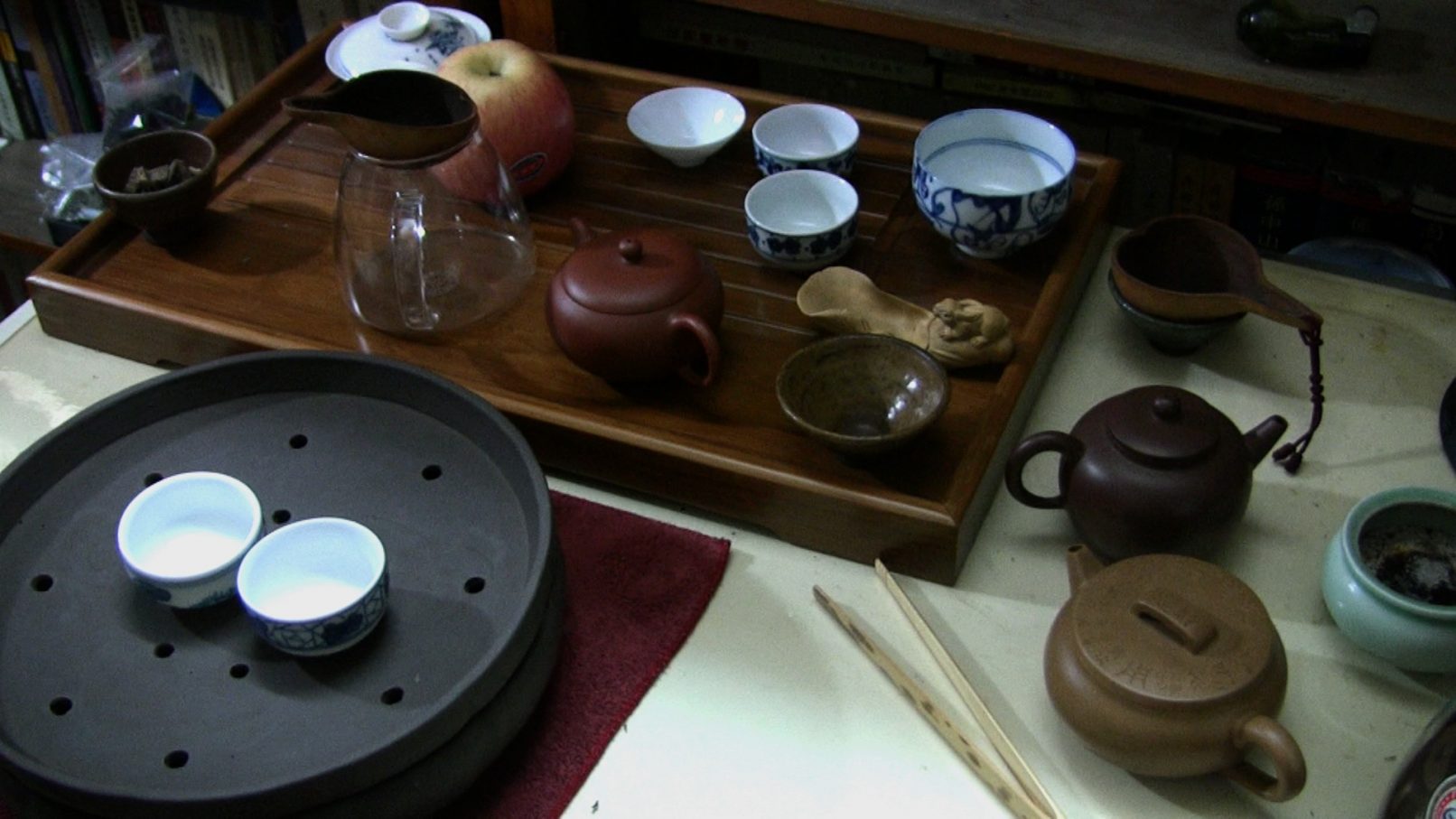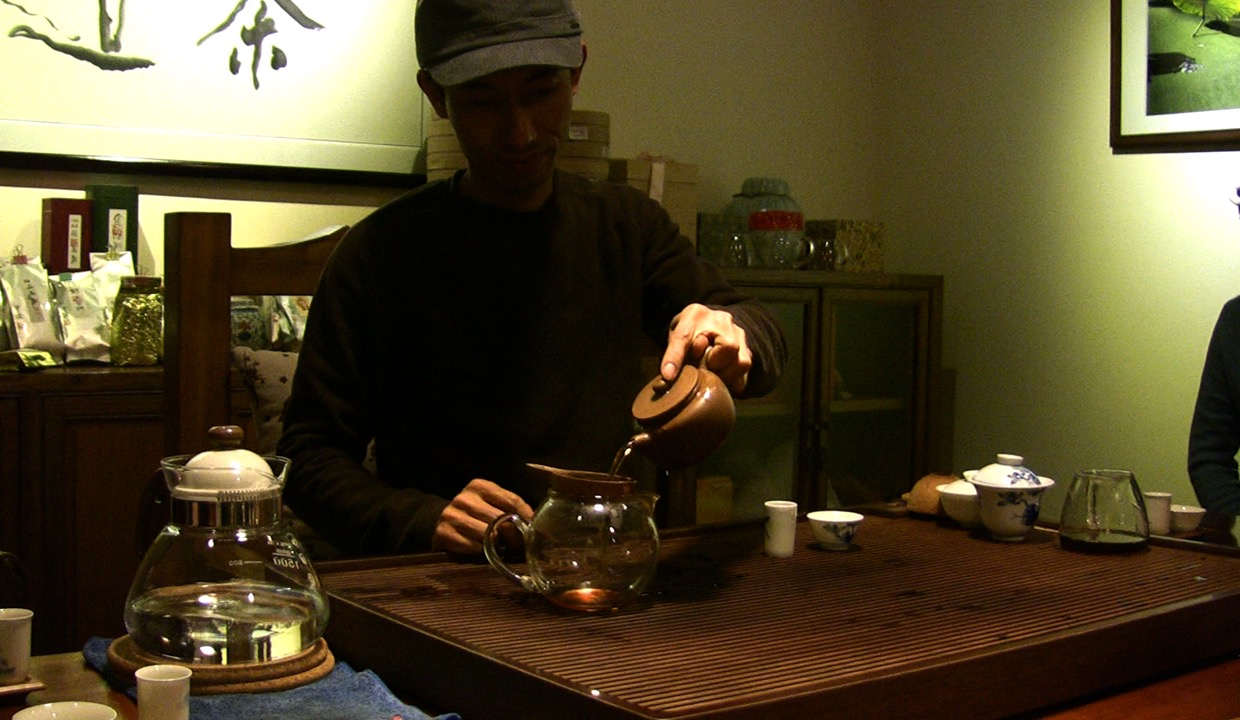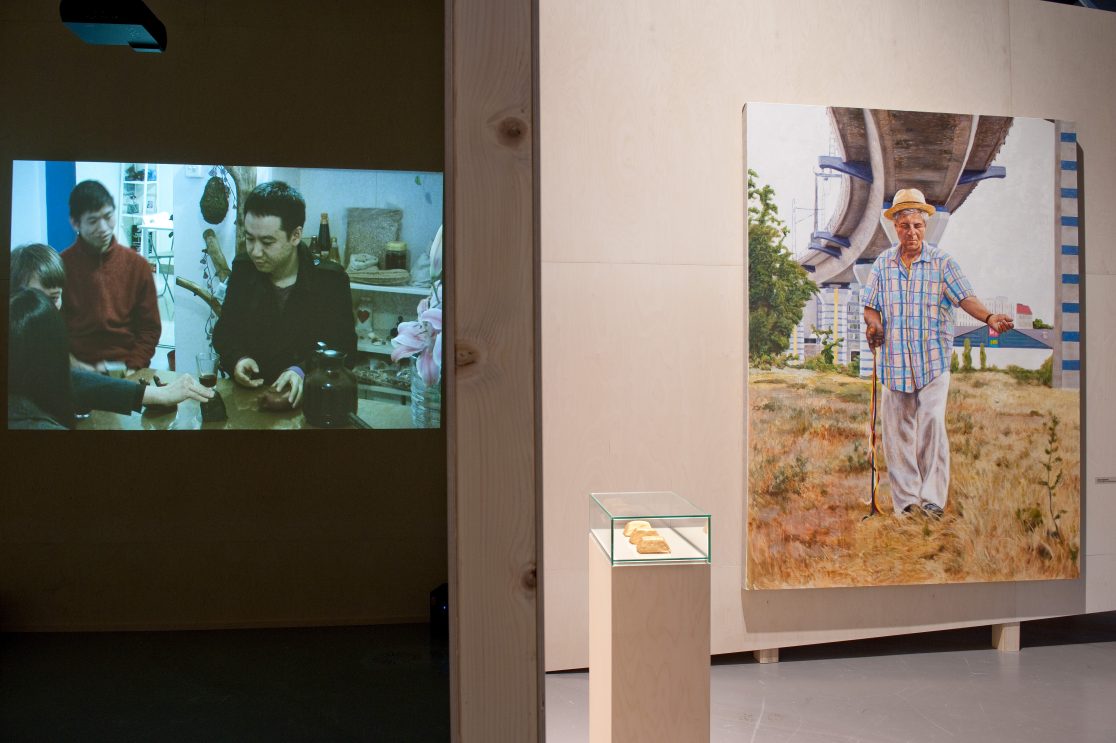The Clay Teapot in the Form of a Human Hand. Conversation between Huang Jian and Antje Majewski, Guangzhou 2011
The conversation takes place in Tian Shui’s Private Kitchen, a vegetarian restaurant situated in a housing block on the Campus of the University of Guangzhou. Huang Jian is an expert in tea pots. The waiter of the restaurant, Jun, has joined the conversation. Since Antje Majewski doesn’t speak Chinese, her assistant and friend Xu Shuxian is translating.
Majewski shows Huang Jian a teapot, which is part of the World of Gimel objects: a clay teapot in the form of a human hand. She asks him for his opinion. Huang Jian tells her that this is not a good teapot. It is a modern, conceptual pot with an idea that at first glance looks creative, but it lacks any deeper sense related to traditional culture. A good teapot should be simple in form, natural, and old. It shouldn’t be too perfect and it should be made by hand, so that it can contain movements, changes. One should be able to see the maker’s thoughts inside.
Jun says that the gesture of the hand of this teapot reminds him of the Buddhist mudra of Guan Yin, the bodhisattva of mercy, meaning “let go.” Huang Jin adds that a very good teapot makes you feel like something that is too far away and at the same time very close to your heart.
Antje then asked them if this would be Wu wei, the Taoist art of “doing nothing.” And also, if this restaurant was like the places in the mountains where the ancient poets hid when times are rough. Huang Jin replies, that the very good hiders hide in the noisy world, not in the mountains. And if she really want to know what a good teapot is, she ought drink tea.
So all went to a tea ceremony in a modern teahouse where about fifteen tea friends had gathered. The tea master, Qiu Sheng, was a rather young man. With slow, elegant gestures he poured the tea into the little cups. Each person has two cups: one longer one, into which the tea is only poured for a few moments, and which is used for smelling it; and a little tea cup for drinking it. There was calm, friendly chatter, and Majewski was allowed to ask questions while the first rounds of tea are poured.
Qiu Sheng told her that in his view the tea, and also the teapot, are alive. When drinking tea, we communicate with a life that is not us.
